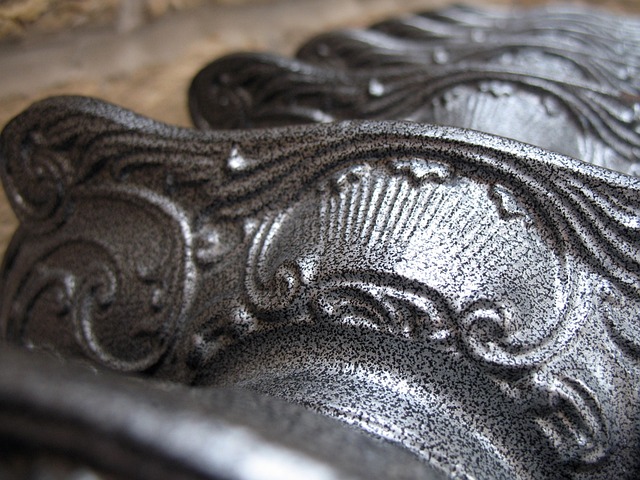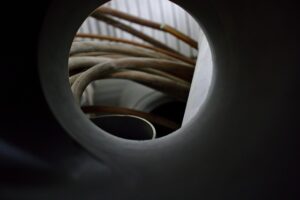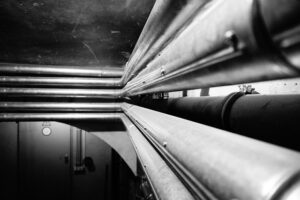Industrial air doors made of stainless steel grades 304 and 316 are ideal for corrosive environments, offering superior durability, temperature regulation, and airflow control. Proper installation, regular cleaning, and maintenance by professionals ensure optimal performance and longevity for warehouse opening protection and factory entrance solutions.
“In harsh, corrosive industrial environments, choosing the right entrance solution is paramount. This is where stainless steel industrial air doors excel. This article delves into the unique challenges of these settings, highlighting the benefits of stainless steel air doors in withstanding corrosion and providing reliable performance.
We explore design considerations, installation best practices, and maintenance tips to ensure optimal functionality. Discover why these doors are a game-changer for various industries, offering both durability and efficiency.”
- Understanding Corrosive Industrial Environments
- Benefits of Stainless Steel Air Doors
- Design Considerations for Industrial Air Doors
- Installation and Maintenance Best Practices
Understanding Corrosive Industrial Environments

Corrosive industrial environments pose unique challenges for equipment and materials due to the presence of aggressive substances like chemicals, salt water, or extreme temperatures. These elements can accelerate metal corrosion, leading to frequent maintenance, replacement, and downtime for critical components. Industrial air doors, specifically designed for such settings, offer a robust solution.
Understanding these corrosive factors is essential when selecting suitable industrial entrance barriers, such as heavy-duty air doors or manufacturing door systems. Warehouse opening protection, factory entrance solutions, and industrial climate separation require materials that can withstand harsh conditions, ensuring the longevity of HVAC barriers like cold storage air doors or large opening air curtains. Effective warehouse management involves minimizing these risks to maintain operational efficiency.
Benefits of Stainless Steel Air Doors

Stainless steel industrial air doors offer a range of benefits tailored for corrosive environments. Their robust construction ensures durability against harsh conditions, making them ideal for manufacturing plants, warehouses, and cold storage facilities where maintaining hygiene and preventing contamination is paramount. These heavy-duty air doors serve as effective industrial entrance barriers, providing superior warehouse opening protection and factory entrance solutions.
Compared to traditional door systems, stainless steel options excel in industrial climate separation, offering enhanced performance in temperature regulation and air quality control. As versatile loading dock barriers, they can withstand frequent use and extreme conditions, making them a reliable choice for efficient logistics operations. Moreover, their seamless design reduces the risk of debris accumulation, ensuring smooth operation as large opening air curtains or industrial HVAC barriers.
Design Considerations for Industrial Air Doors

When designing industrial air doors for corrosive settings, several key considerations come into play to ensure optimal performance and longevity. First, materials are paramount. Stainless steel is a preferred choice due to its resistance to rust and corrosion, vital attributes in environments exposed to harsh chemicals or frequent moisture. Specifically, 304 and 316 grades of stainless steel offer superior durability for industrial entrance barriers, manufacturing door systems, and warehouse opening protection.
Second, the design must account for the specific demands of the application. Heavy-duty air doors, including large opening air curtains and cold storage air doors, require robust sealing mechanisms to maintain desired temperature control and prevent unwanted air exchange. Factory entrance solutions and loading dock barriers necessitate robust construction capable of withstanding frequent use and varying weather conditions. Additionally, industrial climate separation requires precise control over airflow and sealing, making advanced sealing technology and customizable panel configurations essential in manufacturing door systems.
Installation and Maintenance Best Practices

Proper installation and regular maintenance are key to ensuring optimal performance and longevity of stainless steel industrial air doors in corrosive environments. When installing industrial air doors, it’s crucial to follow manufacturer guidelines precisely, aligning the doors correctly for seamless operation and sealing against gaps that could compromise efficiency.
Regular cleaning and inspection are vital components of maintenance best practices. Given the corrosive nature of many industrial settings, using appropriate cleaning agents and avoiding harsh chemicals is essential to preserve the door’s surface finish. Monitoring for signs of wear or damage on both the door panels and hardware will help identify potential issues early, preventing larger problems down the line. Consider a scheduled maintenance program involving professional technicians for detailed inspections and repairs, ensuring your heavy-duty air doors, warehouse opening protection, and factory entrance solutions remain reliable components of your facility’s infrastructure. These proactive measures contribute to enhanced operational efficiency, safety, and cost savings in the long run, providing effective industrial climate separation and loading dock barriers.
Industrial air doors, particularly those made from stainless steel, are a robust solution for corrosive environments. By understanding the unique challenges of these settings and considering key design elements, businesses can benefit from enhanced efficiency, improved safety, and reduced maintenance costs. Stainless steel’s resistance to corrosion ensures these industrial air doors last longer, maintaining their performance even in the most demanding conditions. When properly installed and maintained, they become essential components in creating controlled environments, enhancing productivity, and ensuring worker safety across various industries.






